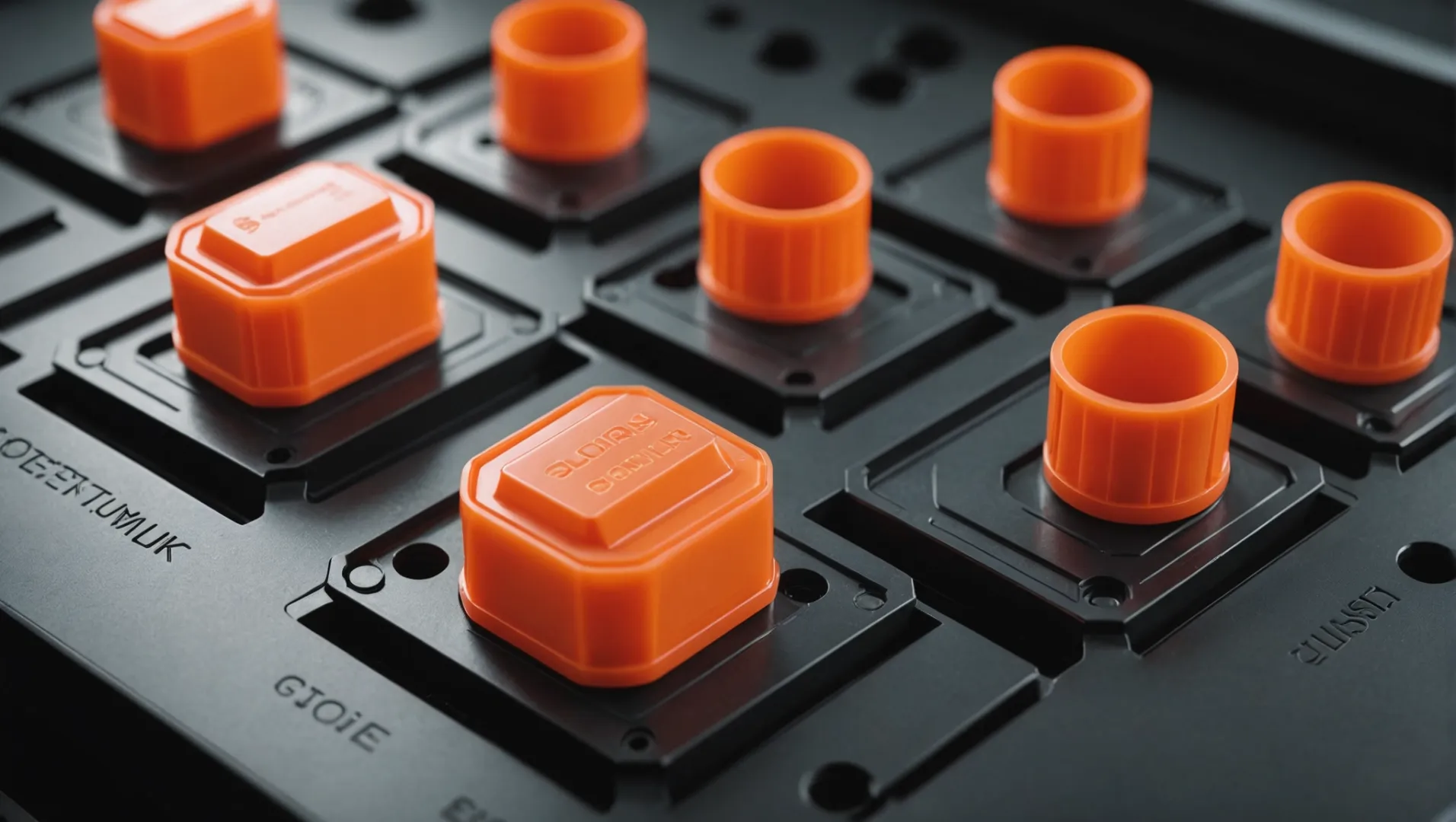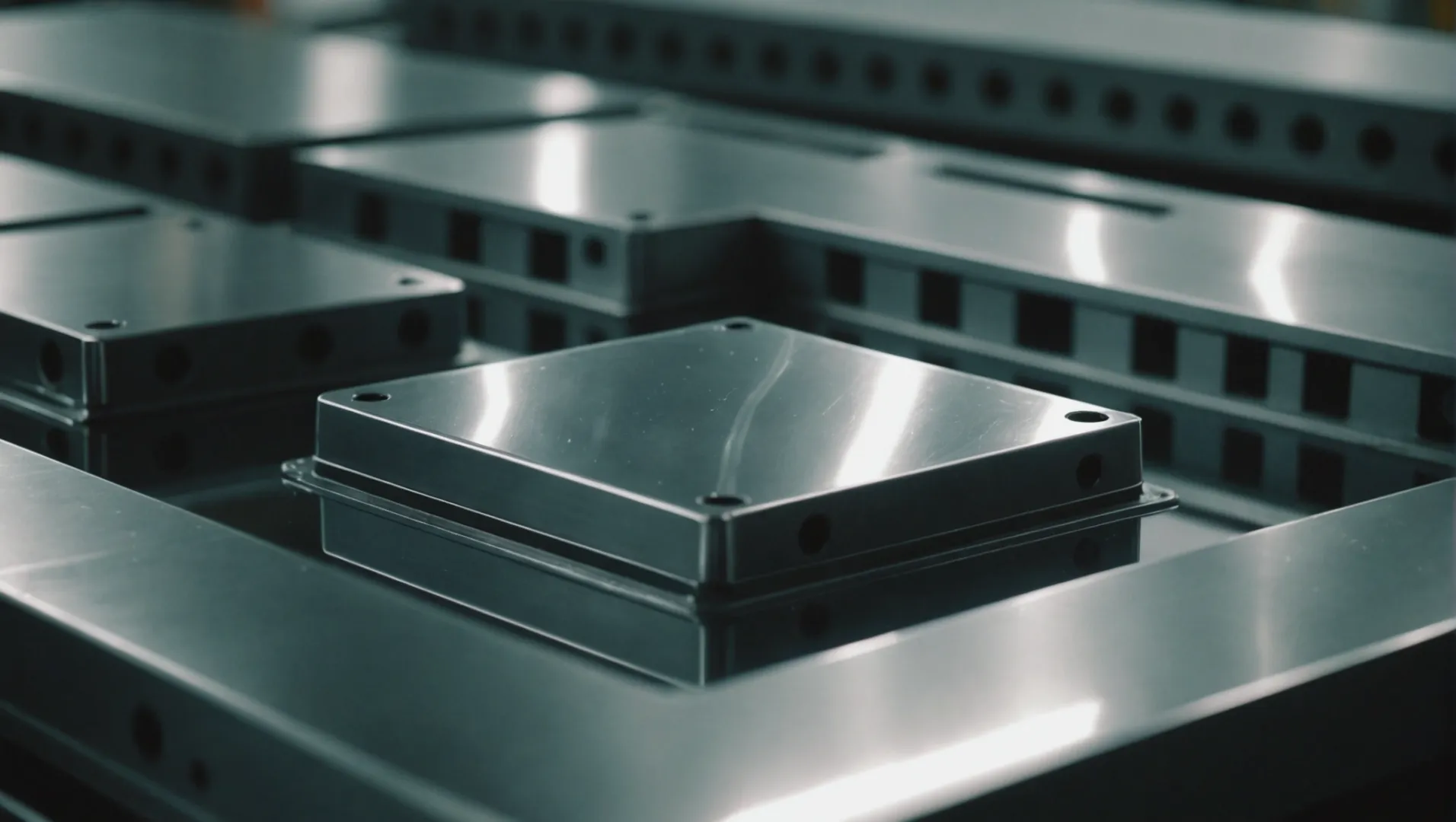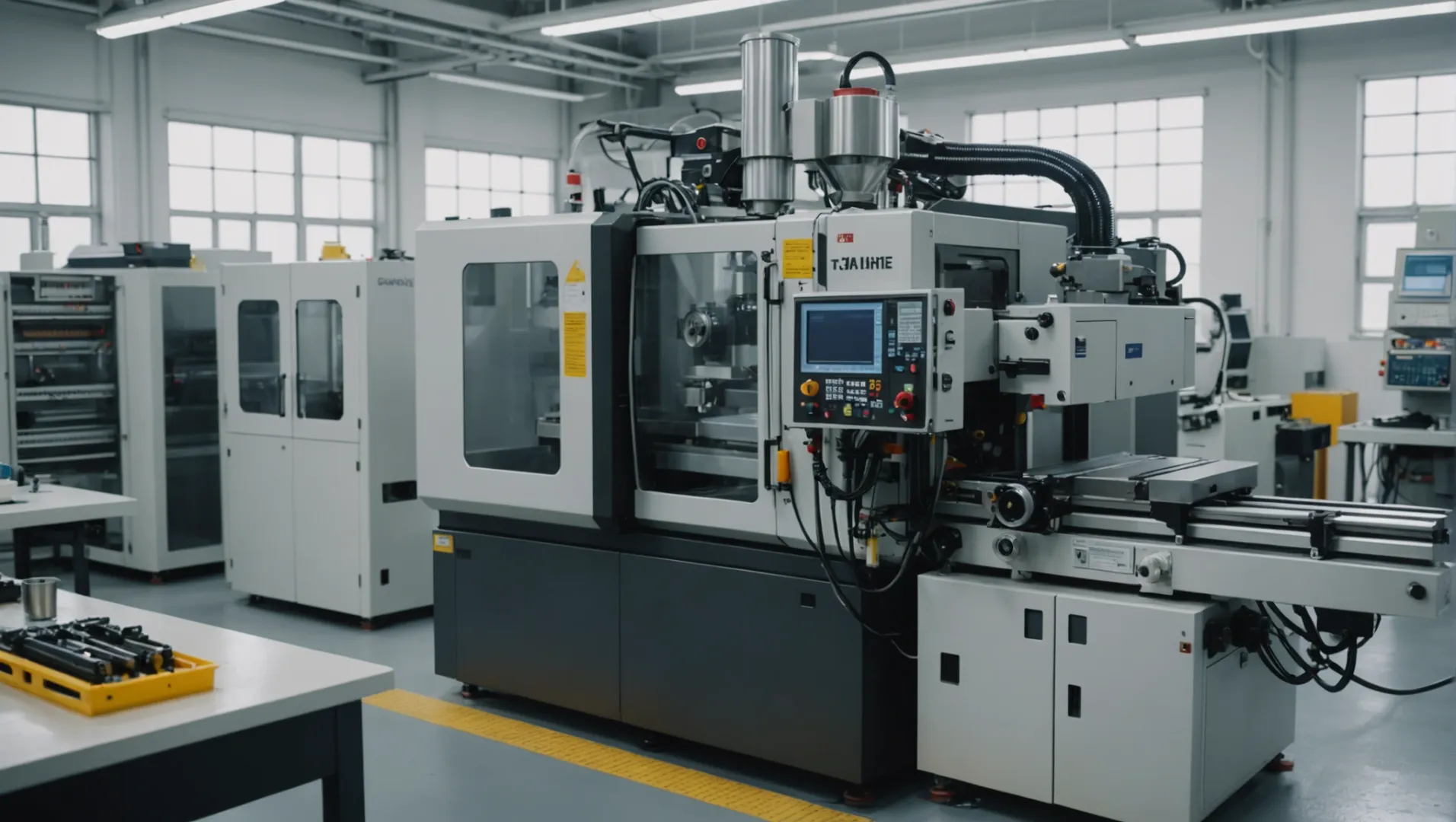
Ever wondered what makes some plastic products shine while others look dull? Let’s unravel the mystery behind brightness in injection molding!
Brightness in injection molding is primarily influenced by material properties, mold surface finish, process parameters, and environmental conditions. Optimizing these factors helps achieve desired gloss levels and improve product aesthetics.
Now that we’ve set the stage, let’s delve deeper into these elements to unlock the secrets of achieving optimal brightness.
Material fluidity affects brightness in injection molding.True
Materials with superior fluidity reduce surface defects, enhancing gloss.
How Do Material Properties Affect Brightness?
Material properties are pivotal in determining the brightness and glossiness of injection molded products, impacting both function and aesthetics.
Material properties influence brightness in injection molding through factors like raw material glossiness and fluidity, which affect surface smoothness and defect minimization.

The Role of Raw Material Glossiness
The inherent glossiness of plastic raw materials significantly impacts the brightness of the final product. Plastics such as ABS, PMMA, and PC are known for their high glossiness due to their molecular structure. For instance, PMMA‘s high transparency and excellent optical properties1, combined with its ability to produce smooth surfaces post-molding, contribute to enhanced product brightness.
Influence of Material Fluidity
Fluidity refers to how well a material can fill the mold during the injection process. Materials with superior fluidity are adept at reducing surface defects like flow marks, which can dull the product’s surface. Conversely, poor fluidity may lead to incomplete mold filling, resulting in a less glossy finish. Ensuring optimal fluidity can thus be crucial for achieving desired brightness levels.
Material Selection for Optimal Brightness
Choosing the right material is critical for ensuring a glossy finish. High-gloss materials are often preferred for products where aesthetic appeal is paramount. A comparison of common plastics’ glossiness is illustrated in the table below:
| Material | Inherent Glossiness | Common Applications |
|---|---|---|
| ABS | High | Automotive interiors |
| PMMA | Very High | Lighting fixtures |
| PC | Moderate | Electronics casing |
This table highlights how selecting materials with appropriate gloss properties can tailor product aesthetics to specific needs.
Additional Considerations in Material Properties
Other material characteristics like hardness and tensile strength can indirectly affect brightness by influencing how well a product retains its shape during cooling and demolding. Understanding the full spectrum of material properties is essential to optimize brightness in injection molding.
For further insights into how different material compositions can alter surface qualities, explore this guide on material properties2.
ABS has higher glossiness than PC in injection molding.True
ABS is known for high gloss, while PC has moderate gloss.
Poor fluidity results in a glossier finish in molded products.False
Poor fluidity leads to surface defects, reducing glossiness.
What Role Does Mold Surface Finish Play in Gloss?
In injection molding, the mold surface finish is crucial for determining the gloss of the final product.
A smooth mold surface finish directly enhances product gloss by reflecting light evenly. Techniques like EDM and polishing improve mold surface quality, leading to higher gloss levels.

The Importance of Mold Surface Finish
In the injection molding process, achieving the desired gloss on a product’s surface can significantly impact its aesthetic appeal and quality perception. The mold surface finish3 plays a pivotal role in this aspect by influencing how light interacts with the product surface. A well-finished mold reflects light more uniformly, resulting in a smoother and glossier appearance.
Techniques to Enhance Mold Surface Finish
-
Electrical Discharge Machining (EDM):
EDM is a precision machining technique that uses electrical discharges to remove material from the mold surface. This method allows for high-precision finishing, which is essential for products requiring a high-gloss surface. By utilizing EDM, manufacturers can achieve detailed and consistent finishes that enhance gloss. -
Polishing:
Polishing is another vital technique used to refine mold surfaces. Different grades of abrasives are employed to smooth out imperfections, leaving a mirror-like finish that greatly contributes to gloss enhancement. For instance, molds used for producing PMMA parts often undergo extensive polishing to achieve the high transparency and gloss characteristic of the material.
Impact of Mold Temperature Control
Besides the surface finish itself, controlling the mold temperature is crucial in optimizing gloss levels. Higher mold temperatures allow for better plastic flow, reducing imperfections that can dull the surface. For example, when working with PMMA, maintaining a mold temperature between 80℃-100℃ ensures optimal gloss by minimizing flow marks and other defects.
Challenges and Considerations
While improving mold surface finish enhances gloss, it is essential to balance cost and time investments against aesthetic needs. Advanced finishing techniques can be resource-intensive; thus, manufacturers must evaluate their significance based on the end-use application of the product.
By understanding these elements and applying advanced finishing techniques, manufacturers can significantly enhance the gloss of injection-molded products, thereby improving their marketability and customer satisfaction.
Smooth mold surfaces increase product gloss.True
Smooth surfaces reflect light evenly, enhancing gloss.
EDM reduces gloss on molded products.False
EDM enhances precision and finish, increasing gloss.
Why Are Injection Molding Process Parameters Critical?
Injection molding process parameters are crucial in determining the quality and finish of the final product, influencing gloss, strength, and precision.
Critical injection molding parameters like injection speed, holding pressure, and cooling time directly affect the final product’s surface quality and structural integrity. Adjusting these parameters ensures optimal gloss and reduces defects.

The Impact of Injection Speed
One of the pivotal parameters in injection molding is the injection speed. A higher injection speed facilitates the plastic material to fill the mold swiftly, minimizing surface defects such as flow marks and weld lines. However, an overly high speed can lead to issues like burn marks or excessive internal stress, which may compromise the product’s integrity. It is essential to calibrate the injection speed according to the material properties and design requirements to achieve an optimal balance between speed and quality.
Importance of Holding Pressure and Time
Holding pressure ensures that molten plastic fills every nook and cranny of the mold cavity, eliminating air pockets and shrinkage. Adequate holding time allows the material to solidify uniformly, which enhances surface smoothness and gloss. Insufficient pressure or time can result in surface depressions and uneven textures, reducing the product’s aesthetic value. For instance, adjusting the holding pressure for materials like PMMA4 can significantly enhance transparency and gloss.
Cooling Time’s Role in Surface Finish
Cooling time is critical for ensuring that the product retains its shape and dimensions after demolding. If cooling is too brief, the product may deform or warp upon release from the mold. An extended cooling period ensures that the material solidifies adequately, maintaining the intended design features and surface qualities. Different materials require tailored cooling times; for instance, certain plastics benefit from longer cooling durations to prevent distortion.
Balancing Other Parameters
Aside from these primary parameters, other factors like mold temperature control and the use of release agents also play vital roles in maintaining a high-quality finish. Proper mold temperature aids in achieving better flow and solidification, directly influencing gloss. Meanwhile, a well-calibrated use of release agents can prevent surface blemishes while facilitating easier demolding.
Understanding how each of these parameters interacts within the injection molding process5 allows manufacturers to fine-tune their operations, resulting in superior product quality and efficiency.
Higher injection speed reduces flow marks.True
Higher speeds allow plastic to fill molds quickly, minimizing defects.
Longer cooling time leads to product warping.False
Extended cooling ensures solidification, preventing deformation.
How Do Environmental Conditions Influence Product Gloss?
Environmental conditions, often overlooked, can dramatically influence the gloss level of injection-molded products, affecting both quality and appearance.
Environmental factors like temperature and humidity can alter the gloss of injection-molded products. High temperatures may increase surface defects, while high humidity can lead to whitening and gloss reduction. Monitoring and controlling these conditions in the production environment is crucial for maintaining optimal product gloss.

The Impact of Temperature on Product Gloss
Temperature is a pivotal environmental factor in the injection molding process6. Excessively high temperatures can cause rapid decomposition of the plastic, leading to surface defects such as flow lines or incomplete fillings. These defects result in a diminished gloss on the finished product. Conversely, maintaining an optimal ambient temperature ensures a smoother surface finish, enhancing gloss.
Managing Temperature:
- Consistent Ambient Temperature: Aim for a stable environment to prevent fluctuations that affect mold temperature control.
- Mold Temperature Control: Ensure mold temperatures are appropriate for the material used to avoid defects that impact gloss.
Humidity’s Role in Gloss Variability
Humidity levels in the production environment also play a critical role. High humidity can lead to moisture absorption by the plastic material, resulting in whitening and reduced glossiness of the product surface. Additionally, moisture can create bubbles within the material, further impacting surface quality.
Controlling Humidity:
- Dehumidifiers: Employ dehumidifiers in the workspace to maintain optimal humidity levels.
- Material Handling: Store materials properly to avoid moisture uptake before processing.
The Effect of Air Quality
Air quality, including dust and contaminants, can settle on the mold or the product surface during production, affecting the final gloss. A clean environment minimizes these risks, ensuring that surface quality remains high.
Air Quality Management:
- Clean Room Environments: Implement clean room standards where feasible to reduce airborne particles.
- Regular Maintenance: Regularly clean molds and equipment to prevent contamination.
Best Practices for Environmental Control
To ensure optimal gloss in your products, integrating environmental control measures into your process is essential:
- Install climate control systems to regulate temperature and humidity consistently.
- Implement rigorous cleaning protocols for maintaining air quality and preventing particulate contamination.
By understanding and mitigating environmental influences, manufacturers can significantly enhance the gloss and overall quality of their injection-molded products.
High humidity reduces gloss in molded products.True
Humidity causes moisture absorption, leading to whitening and gloss reduction.
Low temperatures enhance product gloss in injection molding.False
Low temperatures can cause defects like flow lines, reducing gloss.
Conclusion
By mastering these factors, you can ensure your injection molded products shine brilliantly, attracting customers with their aesthetic appeal.
-
Learn why PMMA’s optical properties enhance its glossiness.: PMMA thin films have the lowest transmittance in the ultraviolet region of the electromagnetic spectrum. In the high-energy area, the transmittance increases … ↩
-
Understand how material composition impacts surface brightness.: Surface finish is a measure of the roughness of a surface. This guide will provide quality information of surface roughness in machining. ↩
-
Learn how mold surface impacts product gloss and appearance.: Draft is required for two reasons: to provide proper release from the mold so you can avoid scratches or drag marks on your part, and to provide a proper angle … ↩
-
Learn how holding pressure adjustments enhance PMMA’s optical properties.: The optimal holding pressure is one that avoids short shots and sink mark defects while also eliminating residual stress. In other words, the … ↩
-
Explore detailed insights into optimizing injection molding settings.: 1. Temperature Control: · 2. Injection Speed: · 3. Cooling Time: · 4. Plastic Material Selection: · 5. Screw Speed and Back Pressure: · 6. Injection … ↩
-
Learn how temperature variations impact injection molding outcomes.: Temperature plays an essential role in injection molding, as it affects the viscosity of the molten material and the cooling time. ↩






